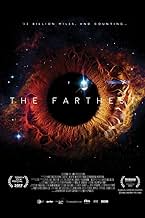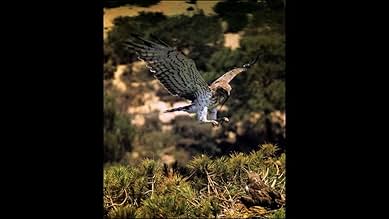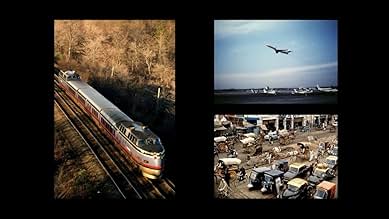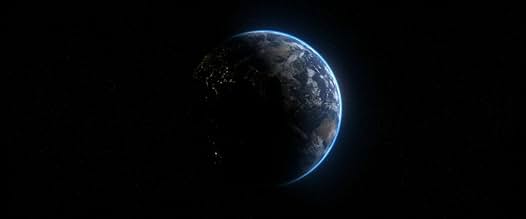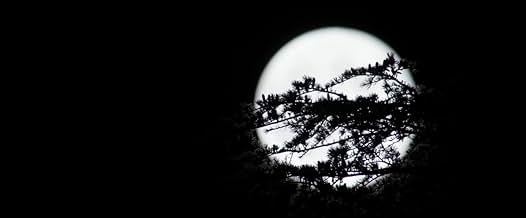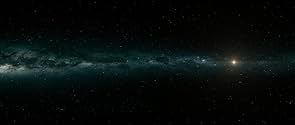È uno dei più grandi successi dell'umanità. A più di 12 miliardi di miglia di distanza una piccola navicella spaziale lascia il nostro Sistema Solare ed entra nello spazio profondo. È il pri... Leggi tuttoÈ uno dei più grandi successi dell'umanità. A più di 12 miliardi di miglia di distanza una piccola navicella spaziale lascia il nostro Sistema Solare ed entra nello spazio profondo. È il primo oggetto creato dall'uomo in assoluto a farlo.È uno dei più grandi successi dell'umanità. A più di 12 miliardi di miglia di distanza una piccola navicella spaziale lascia il nostro Sistema Solare ed entra nello spazio profondo. È il primo oggetto creato dall'uomo in assoluto a farlo.
- Regia
- Sceneggiatura
- Star
- Premi
- 12 vittorie e 9 candidature totali
Recensioni in evidenza
The film was a bit too long, at two hours, and maybe it would have been more powerful as a mini-series instead. It goes through the excitement when it first reaches Jupiter, then Saturn, then the bitter sweet moment when Voyager 2 reaches Uranus at the same time that Challenger explodes and finally Neptune. Another quote was about how small color dots from the Earth telescopes turn into worlds when Voyager goes past the planets.
I love all of these documentaries, which show who worked passionately to make things like these happen, to truly further humanity against all odds and against its mostly indifferent members, shows that really show the worlds around us and expand our horizons. If you love space, you should see this.
'The Farthest' does its subject justice and as every bit a remarkable achievement. It is for me a highlight of 2017, and is accessible to anybody. One does not have to have deep knowledge of the story of the two voyagers to be completely fascinated by 'The Farthest'. It will illuminate those who do, nobody should be frustrated at not learning anything new, but has enough that will attract a wider audience who may have heard of it but not in great detail or have no knowledge and want to know more.
Visually, 'The Farthest' is stunning, beautifully photographed and those images of Jupiter, Saturn, Uranus and Neptune are enough to take the breath away. Loved the wide variety of music choices and felt they added a lot.
Emer Reynolds' direction impresses hugely, she does play it safe with combining the NASA interviews with simulations of CGI, poetic shots of Earth and archive footage. Yet it doesn't feel too safe at all, with enough ambition that never comes over as over-ambitious.
Loved the way 'The Farthest' was written and assembled. The scientific elements are hugely intriguing and illuminating to anybody watching regardless of how expertly or limited their knowledge. Then there are some philosophical elements that are thought-provoking and even touching, without being self-indulgent.
Where 'The Farthest' particularly excels are how the enthusiasm (perceptive and honest and never glorifying) of the crew (namely the scientists and engineers) is conveyed, adding even further to how inspirational this mission and story are, and how ingeniously imaginative the technology (the technology itself and behind the scenes of how it came to be) is in making the mission possible. These are presented in a very humble manner.
In summation, remarkable. 10/10 Bethany Cox
Its genuinely quite an incredible story. Especially when you remind yourself that this extremely complex, technical and frankly unprecedented undertaking was achieved using mid 70's technology. In 2012 Voyager 1 became the first man-made object to leave our solar system and reach interstellar space, having orbited all four of the giant planets taking a series of incredible pictures of them and their moons. It achieved this with computer memory a tiny fraction of what can be found in a modern smart phone. Its bordering on a miracle that this mission was accomplished, especially when you learn that certain moments were executed with split-second accuracy, a fracture of a second more would have led to destruction, such as the moment where the probe was propelled between the atmosphere of Uranus and one of its moons. It's all the more impressive when you discover that the probes were re-programmable via communication with a craft which was over a billion miles away. It was in summary one of the greatest undertakings humans have ever executed.
The documentary takes a fairly traditional talking heads format where we hear recollections of various scientists involved in the programme. Its these moments themselves which add a considerable amount of emotional weight to proceedings, making it clear that these space probes were ultimately far more than scientific equipment, they represented something far more and quite wonderful. It's not just the scientific angle of the mission but also the philosophical, such as the moment late in the mission that the cameras were reversed to look back at Earth which was now a pixel, making it clear how small we are in the universe while simultaneously making us realise that we need to look after our small planet as this little dot on a picture is all we have. There is some considerable detail given to the golden record, which contains the music, sounds and imagery of Earth. The music ranged from Mozart to Chuck Berry (with The Beatles foolishly refusing one of their songs), the imagery constitutes about one hundred pictures which attempted to convey the world as much as possible. This alien contact element of the mission was unsurprisingly given a lot of publicity at the time but it is only now that the probe has finally left our solar system that this has become the whole mission. But really, the imagery of the four mysterious giant planets is the real pinnacle of the Voyager missions and the incredible imagery that it captured remains quite extraordinary. These probes will more than likely hurtle onwards through deep space at 10 miles per second for billions of years long after our planet and sun are gone, and that says it all really.
Lo sapevi?
- Citazioni
Title Card: This is a present from a small distant world, a token of our sounds, our science, our images, our music, our thoughts and our feelings. We are attempting to survive our time so we may live into yours. -President Jimmy Carter's Golden Record Message, June 16th 1977
- ConnessioniFeatured in Box Office: Episodio datato 26 luglio 2017 (2017)
- Colonne sonoreAlima Song
From the album Music of the Ituri Forest
Courtesy of Smithsonian Folkways Recordings
I più visti
- How long is The Farthest?Powered by Alexa
Dettagli
- Data di uscita
- Paese di origine
- Lingue
- Celebre anche come
- The Farthest: Voyager in Space
- Aziende produttrici
- Vedi altri crediti dell’azienda su IMDbPro
Botteghino
- Lordo Stati Uniti e Canada
- 14.773 USD
- Fine settimana di apertura Stati Uniti e Canada
- 6900 USD
- 13 ago 2017
- Lordo in tutto il mondo
- 44.921 USD



